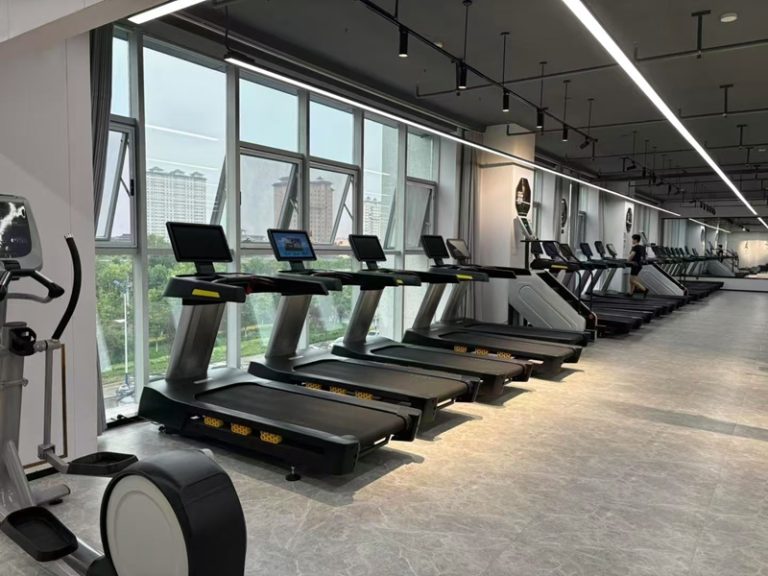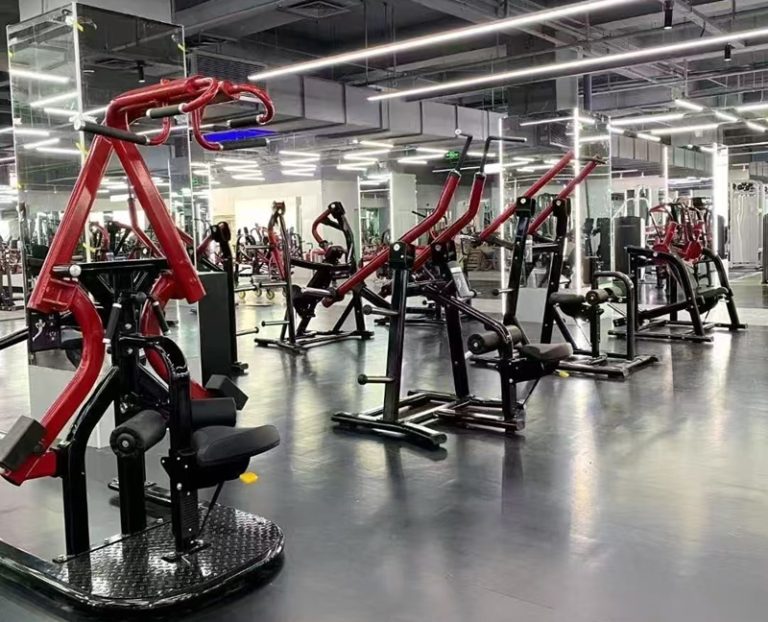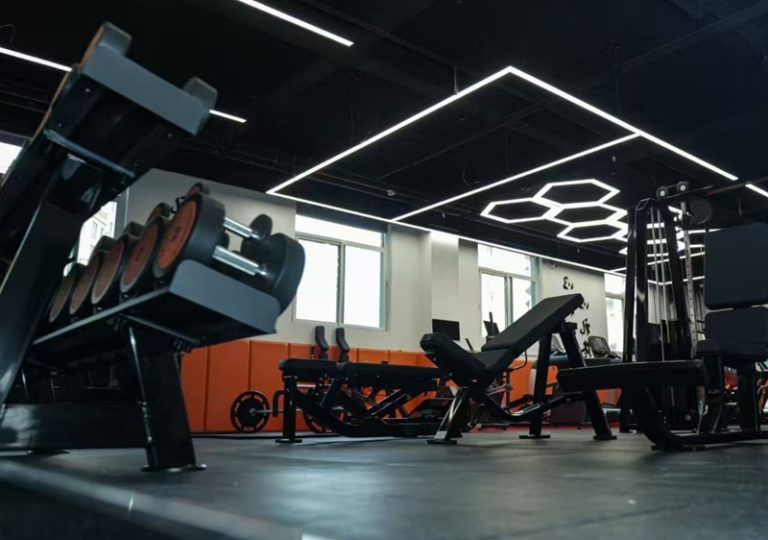As a beginner, it is very necessary to have a scientific fitness guide.
First of all, it should be pointed out that From the very beginning of your fitness journey, you’d better cultivate and correct your living habits. Drink plenty of water, eat more fruits and vegetables, avoid overeating, staying up all night, skipping breakfast, smoking and drinking, and so on. Because since you have chosen fitness, you have chosen a positive and healthy lifestyle, so don’t have those bad habits. Leave them all in your memories! Alright, let’s cut the small talk and get back to the point! A complete fitness program should cover three aspects: eating (diet), training (exercise), and sleeping (sleep). Among them, training mainly consists of three parts: heart and lungs, strength, and flexibility.

The training plan provided by the editor is as follows: Start with 5 to 10 minutes of aerobic warm-up, end with 5 to 10 minutes of stretching and relaxation, and then do 40 to 50 minutes of strength training in the middle. Strength training mainly includes: 1) Back: pull-ups (pulling down the neck in front); 2) Chest: Bench press (chest press while sitting) 3) Legs: Barbell squat (Smith squat); 4) Shoulder: Barbell press (dumbbell press); 5) Arms: Barbell curls (dumbbell curls); 6) Abdomen: Sit-ups (leg raises while lying on your back). Training Notes: Train three times a week, every other day. Each session lasts about one hour, covering the entire body. Perform one movement for each part of the body. The movements in parentheses are set aside. Do three sets of one movement, with 8 to 12 repetitions per set. There should be a 2-minute interval between movements and a 30-60 second interval between sets. Exhale when exerting force and inhale when relaxing. The movements should be steady and slow. It is necessary to gradually increase the weight to enhance the adaptability of the muscles, thereby generating a response to the training.

Train using equipment with freely adjustable weights. This can enable the muscles to respond better to the resistance exerted by the equipment. Because it can enable more muscles to participate in the movement. When performing movements, whether lifting or lowering, one should control the movements well. This way, one can concentrate the force and avoid borrowing force. In terms of diet: Eat small meals frequently and consume more eggs, milk and meat in moderation. The daily diet is: moderate protein, less fat, and high carbohydrate content. The ratio of the three main nutrients should be around 25:20:55.

The carbohydrate content of staple foods such as steamed buns, noodles and rice, as well as sweet potatoes, oats and potatoes, is very high and can be the first choice. Protein is the most important source of nutrition for muscle growth. Bodybuilders should mainly consume non-fat or low-fat foods for protein intake, such as skimmed milk, egg whites, fish, skinless poultry, steak, etc. In terms of sleep: It is best to sleep for at least 8 hours every night. If you have time at noon, you can take a 30-minute nap. By the way, try to schedule the training time in the afternoon or evening, as the physical strength and flexibility of the human body are at their best during this period. Finally, I wish you success in your fitness as soon as possible! 14 Secrets to Building Muscle Mass: Heavy weights, low repetitions, multiple sets, long displacement, slow speed, high density, consistent thought and movement, peak contraction, continuous tension, relaxation between sets, focus on large muscle groups, consume protein after training, rest for 48 hours, and prefer light to fake.

- Heavy weight, low repetitions: In bodybuilding theory, RM is used to represent the maximum number of repetitions that can be done continuously with a certain load. For instance, if a practitioner can only lift a certain weight five times in a row, then that weight is 5RM. Studies show that load training at 1-5RM can thicken muscles, develop strength and speed. Load training at 6-10RM can make muscles thicker, increase strength and speed, but the improvement in endurance is not significant. At a load of 10-15RM, the thickening of muscle fibers is not obvious, but there is improvement in strength, speed and endurance. At a load of 30RM, the number of capillaries in the muscles increases, endurance improves, but the improvement in strength and speed is not significant. It can be seen that a load weight of 5 to 10RM is suitable for bodybuilding training that increases muscle volume.
- Multiple sets: Whenever you think of exercising, do 2 to 3 sets. This is actually a waste of time and won’t build muscle at all. It is necessary to specifically set aside 60 to 90 minutes to focus on exercising a certain part of the body, doing 8 to 10 sets of each movement, in order to fully stimulate the muscles. At the same time, the longer the recovery time required for the muscles. Keep working until the muscles are saturated. “Saturation” should be felt by yourself. The standards for its moderation are: soreness, distension, numbness, firmness, fullness, expansion, and obvious thickness in the shape of the muscles, etc.
- Long displacement: Whether it’s rowing, bench press, press, or bending, first lower the dumbbells as low as possible to fully stretch the muscles, and then lift them as high as possible. This one sometimes contradicts “constant tension”, and the solution is to quickly pass through the “lock” state. However, I do not deny the role of heavy half-distance exercises.

- Slow speed: Lift slowly and then lower slowly. This provides a deeper stimulation to the muscles. Especially when lowering the dumbbells, it is necessary to control the speed well and do concession exercises, which can fully stimulate the muscles. Many people neglect the practice of giving in. They consider the task accomplished by lifting the dumbbells and put them down quickly, thus wasting a great opportunity to build muscle.
- High density: “Density” refers to the rest time between two groups. A rest of only one minute or less is called high density. To make muscle blocks grow rapidly, one should rest less and frequently stimulate the muscles. “Multiple groups” are also based on “high density”. When exercising, be as focused as in a battle, concentrating fully on the training and not thinking about anything else.
- Consistency of thought and movement: The function of muscles is controlled by nerves. When attention density is concentrated, more muscle fibers can be mobilized to participate in the work. When practicing a certain movement, one should consciously align the mind with the movement, that is, think about what muscles are working when practicing. For instance, when practicing standing curls, one should lower their head and look at their arms with both eyes, observing the biceps gradually contracting.

- Peak contraction: This is a major rule for making muscle lines very distinct. It requires that when a certain movement reaches the most tense position of muscle contraction, one should maintain this most tense state of contraction for a while, perform static exercises, and then gradually return to the starting position of the movement. My method is to count from 1 to 6 when I feel my muscles are the most tense, and then put them down.
- Continuous tension: Muscles should be kept tense throughout the entire set, whether at the beginning or the end of the movement. Do not let them relax (not be in a “locked” state), and always reach complete exhaustion.
- Relaxation between sets: After completing each set of movements, stretch and relax. This can increase blood flow to the muscles, help eliminate waste accumulated in the muscles, accelerate muscle recovery, and quickly replenish nutrients.
- Strengthen large muscle groups: Strengthening the large muscle groups of the chest, back, waist, buttocks and legs can not only make the body strong, but also promote the growth of muscles in other parts. Some people, in an attempt to thicken their arms, only train their arms but not other parts of the body, which instead causes the growth of their biceps to be very slow. It is recommended that you arrange some large-scale compound movement exercises with heavy weights, such as heavy squats, which can promote the growth of muscles in all other parts. This is extremely important. Sadly, at least 90% of people do not pay enough attention to it, thus failing to achieve the expected results. Therefore, in the training plan, it is necessary to include more of the five classic compound movements: deadlifts, squats, bench presses, push-ups and pull-ups.

- Consume protein after training: The demand for protein reaches its peak within 30 to 90 minutes after training, and supplementing protein at this time is the most effective. But don’t eat immediately after training. Wait at least 20 minutes.
- Rest for 48 hours: After one local muscle training session, it is necessary to rest for 48 to 72 hours before conducting the second training. If high-intensity strength training is carried out, a 72-hour interval between two local muscle training sessions is still insufficient, especially for large muscle blocks. However, the abdominal muscles are an exception. Unlike other muscle groups, they must be stimulated frequently. At least four exercises should be done every week, each lasting about 15 minutes. Choose three exercises that are most effective for you and do only three sets, 20 to 25 repetitions in each set, all until you are exhausted. The interval between each group should be short and not exceed one minute.
- Better light than false: This is a secret that is not a secret. Many beginners in bodybuilding attach great importance to practicing weight and the number of movements, but pay little attention to whether the movements are distorted. The effectiveness of bodybuilding training does not only depend on the weight of the load and the number of movements, but also on whether the muscles being trained are directly subjected to force and the degree of stimulation.
If the movements are distorted or not in place, the muscles to be trained will not be stressed or only partially stressed, and the training effect will be limited, or even deviate. In fact, among all the rules, the correctness of the action is always the most important. It is better to lift a relatively light weight with correct movements than to lift a heavier weight with non-standard movements. Don’t compare yourself with others, nor take the ridicule in the gym to heart.#Fitness equipment manufacturers wholesale various styles of fitness equipment#Wholesale of large commercial fitness equipment#An outstanding manufacturer and wholesaler of fitness equipment in China






